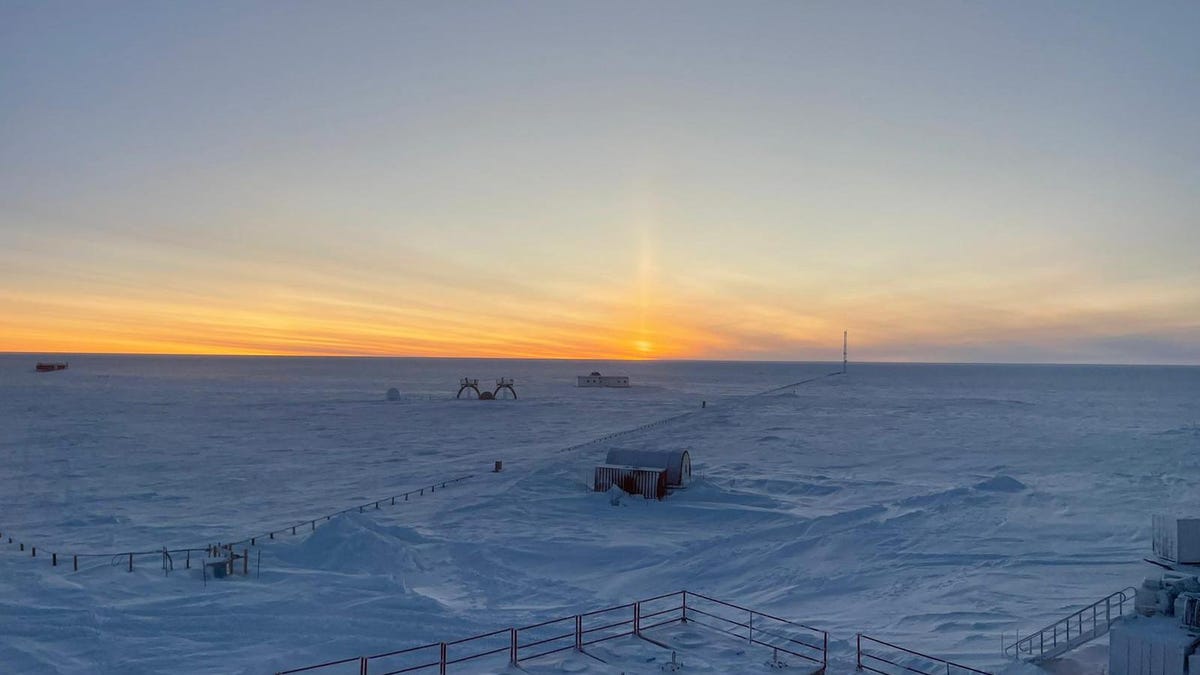See an Exquisite 'Sun Pillar' Optical Illusion Glowing in Antarctica
Beam me up, Scotty.
It's a heartwarming time of year for researchers at the isolated Concordia research station in Antarctica. They've been surrounded by snow and cold and darkness for months, but summer is finally on its way. A stunning photo taken from the station shows a gorgeous optical illusion and encapsulates the brightness of the changing season.
Enlarge for a closer look at the sun pillar.
The picture shows an expanse of snow with fencing and other signs of human habitation in the mix. The sun appears to be sending up an orange-yellow beam of light shooting from the horizon into the sky.
On Thursday, the European Space Agency described the phenomenon as a "sun pillar" optical illusion created from sunlight reflecting from tiny ice crystals suspended in the atmosphere.
European Space Agency-sponsored medical doctor Hannes Hagson captured the view from where the station is located high on the Antarctic plateau.
Concordia residents live in darkness for four months during the winter from May through August. Hannes has been studying the effects of isolation, lack of sunlight and low oxygen on the station crew. That data can be helpful in understanding how astronauts can deal with similar conditions during space exploration.
You don't have to travel all the way to Antarctica to experience a beautiful beam-of-light illusion. "Moonlight, and even streetlights, can create the same effect in icy conditions, in which case it is known more generally as a light pillar," ESA said. Keep your eyes open to the magic around you.


